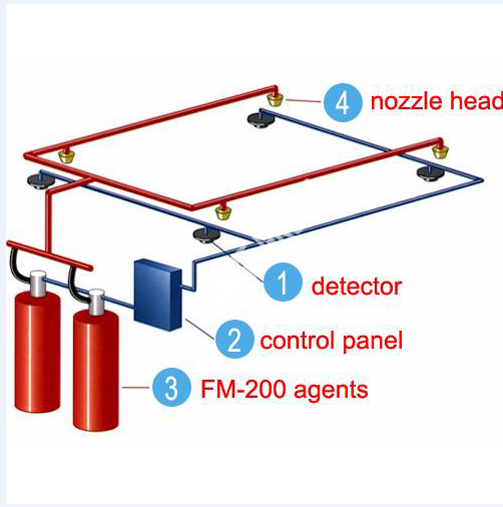Automotive Electricity And Electronics : You are probably reading this book for one of two reasons. Either you are preparing yourself to enter into the field of Automotive service or you are expanding your skills to include Automotive electrical systems.
 |
| Automotive Electricity And Electronics |
Automotive Electricity And Electronics
Contents
- Chapter 1 Introduction to Automotive Electrical and Electronic Systems .
- Chapter 2 Basic Theories .
- Chapter 3 Electrical and Electronic Components .
- Chapter 4 Wiring and Circuit Diagrams .
- Chapter 5 Automotive Batteries .
- Chapter 6 Starting Systems and Motor Designs .
- Chapter 7 Charging Systems .
- Chapter 8 Lighting Circuits .
- Chapter 9 Introduction to the Body Computer .
- Chapter 10 Computer Inputs .
- Chapter 11 Vehicle Communication Networks .
- Chapter 12 Advanced Lighting Circuits .
- Chapter 13 Instrumentation and Warning Lamps .
- Chapter 14 Accessories .
- Chapter 15 Passive Restraint Systems .
- Chapter 1 Introduction to Automotive Electrical and Electronic Systems .
Upon completion and review of this chapter, you should be able to understand and describe:
- The role of electrical systems in today’s vehicles.
- The interaction of the electrical systems.
- The purpose of the starting system.
- The purpose of the charging system.
- The role of the computer in today’s vehicles.
- The purpose of vehicle communication networks.
- The purpose of various electronic accessory systems.
- The purpose of passive restraint systems.
- The purpose of alternate propulsion systems.
Introduction
You are probably reading this book for one of two reasons. Either you are preparing yourself to enter into the field of Automotive service or you are expanding your skills to include Automotive electrical systems. In either case, congratulations on selecting one of the most fast-paced segments of the automotive industry. Working with the electrical systems can be challenging, yet very rewarding; however, it can also be very frustrating at times.For many people, learning electrical systems can be a struggle. It is my hope that I am able to present the material to you in such a manner that you will not only understand electrical systems but will excel at it. Th ere are many ways the theory of electricity can be explained, and many metaphors can be used. Some compare electricity to a water flow, while others explain it in a purely scientific fashion. Everyone learns differently. I am presenting electrical theory in a manner that I hope will be clear and concise. If you do not fully comprehend a concept, then it is important to discuss it with your instructor. Your instructor may be able to use a slightly different method of instruction to help you to completely understand the concept. Electricity is somewhat abstract; so if you do have questions, be sure to ask your instructor.
Why Become an Electrical System Technician?
In the past it was possible for technicians to work their entire careers and be able to almost completely avoid the vehicle’s electrical systems. Th ey would specialize in engines, steering / suspension, or brakes. Today there is not a system on the vehicle that is immune to the role of electrical circuits. Engine controls, electronic suspension systems, and antilock brakes are common on today’s vehicles. Even electrical systems that were once thought of as being simple have evolved to computer controls. Headlights are now pulse-width modulated using highside drivers and will automatically brighten and dim based on the light intensity of oncoming traffic. Today’s vehicles are equipped with twenty or more computers, laser-guided cruise control, sonar park assist, infrared climate control, fi ber optics, and radio frequency transponders and decoders. Simple systems have become more computer reliant. For example, the horn circuit on the 2008 Chrysler 300C involves three separate control modules to function. Even the tires have computers involved, with the addition of tire pressure monitoring systems ! Today’s technician must possess a full and complete electrical background to be able to succeed. Th e future will provide great opportunities for those technicians who have prepared themselves properly.
- The role of electrical systems in today’s vehicles.
- The interaction of the electrical systems.
- The purpose of the starting system.
- The purpose of the charging system.
- The role of the computer in today’s vehicles.
- The purpose of vehicle communication networks.
- The purpose of various electronic accessory systems.
- The purpose of passive restraint systems.
- The purpose of alternate propulsion systems.
Upon completion and review of this chapter, you should be able to understand and describe:
Introduction
You are probably reading this book for one of two reasons. Either you are preparing yourself to enter into the field of Automotive service or you are expanding your skills to include Automotive electrical systems. In either case, congratulations on selecting one of the most fast-paced segments of the automotive industry. Working with the electrical systems can be challenging, yet very rewarding; however, it can also be very frustrating at times.
For many people, learning electrical systems can be a struggle. It is my hope that I am able to present the material to you in such a manner that you will not only understand electrical systems but will excel at it. Th ere are many ways the theory of electricity can be explained, and many metaphors can be used. Some compare electricity to a water flow, while others explain it in a purely scientific fashion. Everyone learns differently. I am presenting electrical theory in a manner that I hope will be clear and concise. If you do not fully comprehend a concept, then it is important to discuss it with your instructor. Your instructor may be able to use a slightly different method of instruction to help you to completely understand the concept. Electricity is somewhat abstract; so if you do have questions, be sure to ask your instructor.
Why Become an Electrical System Technician?
In the past it was possible for technicians to work their entire careers and be able to almost completely avoid the vehicle’s electrical systems. Th ey would specialize in engines, steering / suspension, or brakes. Today there is not a system on the vehicle that is immune to the role of electrical circuits. Engine controls, electronic suspension systems, and antilock brakes are common on today’s vehicles. Even electrical systems that were once thought of as being simple have evolved to computer controls. Headlights are now pulse-width modulated using highside drivers and will automatically brighten and dim based on the light intensity of oncoming traffic. Today’s vehicles are equipped with twenty or more computers, laser-guided cruise control, sonar park assist, infrared climate control, fi ber optics, and radio frequency transponders and decoders. Simple systems have become more computer reliant. For example, the horn circuit on the 2008 Chrysler 300C involves three separate control modules to function. Even the tires have computers involved, with the addition of tire pressure monitoring systems !
Today’s technician must possess a full and complete electrical background to be able to succeed. Th e future will provide great opportunities for those technicians who have prepared themselves properly.
The Role of Electricity in the Automobile
In the past, electrical systems were basically stand-alone. For example, the ignition system was only responsible for supplying the voltage needed to fi re the spark plugs. Ignition timing was controlled by vacuum and mechanical advance systems. Today there are very few electrical systems that are still independent.
The wiper system can interact with the headlight system to turn on the headlights whenever the wipers are turned on. Th e wipers can interact with the vehicle speed sensor to provide for speed-sensitive wiper operation. Th e speed sensor may provide information to the antilock brake module. The antilock brake module can then share this information with the transmission control module, and the instrument cluster can receive vehicle speed information to operate the speedometer. If the vehicle speed sensor should fail, this could result in no antilock brake operation and a warning light turned on in the dash. But it could also result in the speedometer not functioning, the transmission not shifting, and the wipers not operating properly.
Introduction to the Electrical Systems
The purpose of this section is to acquaint you with the electrical systems that will be covered in this book. We will define the purpose of these systems.
Author’s Note: Th e discussion of the systems in this section of the chapter provides you with an understanding of their main purpose. Some systems have secondary functions. All of these will be discussed in detail in later chapters.
The Starting System
The starting system is a combination of mechanical and electrical parts that work together to start the engine. Th e starting system is designed to change the electrical energy, which is being supplied by the battery, into mechanical energy. For this conversion to be accomplished, a starter or cranking motor is used. Th e basic starting system includes the following components (Figure 1-1) :
- Battery.
- Cable and wires.
- Ignition switch.
- Starter solenoid or relay.
- Starter motor
- Starter drive and fl ywheel ring gear.
- Starting safety switch
The starter motor (Figure 1-2) requires large amounts of current (up to 400 amperes) to generate the torque needed to turn the engine. The conductors used to carry this amount of current (battery cables) must be large enough to handle the current with very little voltage drop. It would be impractical to place a conductor of this size into the wiring harness to the ignition switch. To provide control of the high current, all starting systems contain some type of magnetic switch. There are two basic types of magnetic switches used: the solenoid and the relay.
The ignition switch is the power distribution point for most of the vehicle’s primary electrical systems. Th e ignition switch is spring loaded in the start position. Th is momentary contact automatically moves the contacts to the RUN position when the driver releases the key. All other ignition switch positions are detent positions.





